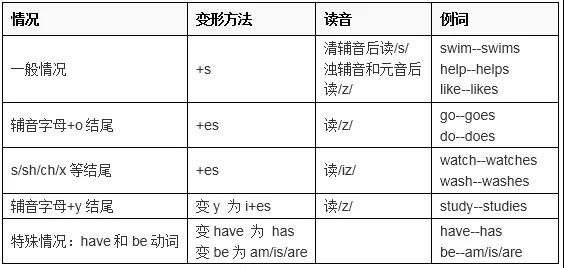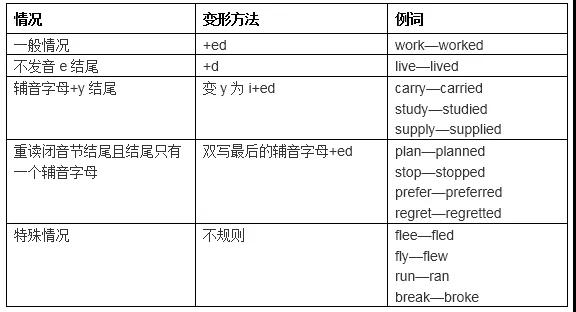出国留学网专题频道英语时态栏目,提供与英语时态相关的所有资讯,希望我们所做的能让您感到满意!
考研英语有许多题目组成,方便大家及时了解,下面由出国留学网小编为你精心准备了“2019考研英语词汇:非谓语动词的时态”,持续关注本站将可以持续获取更多的考试资讯!
2019考研英语词汇:非谓语动词的时态
在考研英语中,现在分词短语和过去分词短语既然不能在句子中作谓语,一般充当的成分为定语和状语。
(一)分词短语作定语
现在分词短语和过去分词短语在作定语的区别为:现在分词短语与所修饰名词为主动关系,而过去分词与所修饰名词为被动关系。
例2000-(75)Additional social stresses may also occur because of the population explosion or problems arising from mass migration movements-themselves made relatively easy nowadays by modern means of transport.
【分析】此句的主干为Additional social stresses may also occur。 because of the population explosion or problems arising from mass migration movements 为原因状语。themselves made relatively easy nowadays by modern means of transport为同位语。其中,arising from mass migration movements 现在分词短语为后置定语,修饰problem。made relatively easy nowadays by modern means of transport过去分词短语作后置定语,修饰themselves。
【译文】由于人口猛增或大量人口流动(现代交通工具使大量人口流动变得相对容易)所引起的各种问题也会对社会造成新的压力。
(二)分词短语作状语
现在分词短语一般在句子中作原因和结果状语,过去分词短语在句子中也可作原因状语。
例2004-(64)Being interesting in the relationship of language and thought, Whorf developed the idea that the structure of habitual thought in a society.
【分析】Being interesting in the relationship of language and thought现在分词短语作原因状语。 that the structure of habitual thought in a society.为同位语从句。句子主干为Whorf developed the idea。
【译文】 由于沃尔夫对语言和思维的关系感兴趣,所以他发展了一个观点,即在一个社会中语言的结构决定了惯性思维的结构。
例2015-(46)This movement ,driven by powerful and diverse motivation...
考研英语有许多题目组成,方便大家及时了解,下面由出国留学网小编为你精心准备了“2020考研英语语法:不定式的时态”,持续关注本站将可以持续获取更多的考试资讯!
2020考研英语语法:不定式的时态
一、虚拟语气的重点
1.一些常见的虚拟语气的句型或结构。
2.虚拟语气的特殊形式,即用来表示要求、的建议、的命令、的提议、的意愿等的主语从句、的宾语从句、的表语从句和同位语从句中的虚拟形式。
3.主从句表示不同的时间概念、的事实或假设情况,从而交错成为复合虚拟语气。
4.含蓄条件句中的虚拟语气的表示愿望的虚拟形式。
上述四个要点往往在完形填空或者阅读理解里面存在,尤其是每年完形填空都至少有一道直接考这方面的知识的题目,而在阅读理解里,我们掌握上述四个重点对于我们理解文章的大意和作者态度很有帮助,了解哪些观点是作者假设的、的虚拟的,哪些是真实的,这样对于我们回答关于作者态度观点题很有帮助。
下面我们将主要从上述四个方面来重点论述在考试中应该注意的问题。
二、虚拟语气的常见类型和句型
(1) 由wish引起的表示愿望的虚拟语气
A.用wish表示对现在的愿望时,它所引起的宾语从句中谓语动词形式为:过去式(be动词用were)。
B.用wish表示对将来的愿望时,它所引起的宾语从句中谓语动词形式为:would, could, might+ 动词原形。
C.wish用于对过去的事实表示一种不可能实现的愿望时,宾语从句中的谓语动词形式为:had+动词过去分词或could, would + have +动词过去分词。
The picture exhibition bored me to death I wish I had not gone to it.
---“I let Joe borrow our radio for the afternoon.”
---“That’s all right, but I wish he would buy one of his own.”
I wish that he weren’t so lazy.
(2) had hoped引起的宾语从句中备用语动词形式为would+动词原形,表示一种过去未实现的愿望或令人失望的事。
His father had hoped that his son would go to business with him, but his son became an artist later.
(3) would (had) rather, would as soon, would sooner和would prefer所引起的从句中要求用过去式表示当时或将来的情况,用过去完成时表示过去的情况,表示希望或婉转的责备。例如:
I’d rather you posted the letter right away. 我倒希望你把这封信立刻寄出去。
I would prefer he didn’t...
小编精心为您收集整理了《2019年中考英语时态介绍<下>》,希望给您带来帮助!更多精彩内容尽在本站,请持续关注。小编祝您考试取得自己理想的成绩哦!
标志:was / were + 动词的现在分词
1. 表示过去某一时刻或一段时间正在进行的动作,过去进行时中常用的时间状语有the whole morning, all day yesterday, from January to March last year等。如:
I was having a talk with Lucy at that time.
They were watching TV at home last night.
2. 表示过去反复出现或习惯性的动作,往往包含说话者赞扬、责备、厌恶等情绪,通常与always, constantly, continually, forever等频度副词连用。如:
My brother was always losing his keys.
3. 表示按计划、安排过去某时刻将要发生的动作,仅适用于部分趋向动词(如go, come, leave, start, arrive等)。如:
He said they were leaving for Beijing this afternoon.
4. 过去进行时有一个主要用法就是描述一件事情发生的背景(一个长动作延续的时候,另一个短动作发生):
Granny fell asleep when she was reading.
It was raining when they left the station.
标志:have / has + 动词的过去分词
1. 表示一个过去发生并已完成的动作对现在产生影响或结果,强调的是现在的状况(表示“已完成”)。如:
He has left the city. (结果:他目前不在这个城市)
Someone has broken the window. (结果:窗户破了)
2. 表示一个动作开始于过去,持续到现在,也可能还会继续持续下去(表示“未完成”)。
I have been busy since last week.
He has taught in our school for 30 years.
I’ve finished half so far.
注意 瞬间动词通常是不能用现在完成时表持续性的,但其否定结构则可以。如:
She hasn’t seen you for ages.
His father hasn’t touched beer for a whole week.
3. 表示过去到现在为止反复发生的动作或多次出现的状态,常与表示频度的副词always, often, every day等连用。如:
I have often heard that ...
一起来看看中考考试栏目小编为您整理的“2019年中考英语时态介绍<上>”吧,也许可以给您的考试带来一点帮助!本网会及时的更新中考考试的最新资讯,敬请关注!
标志:动词原形

1. 表示经常性或习惯性动作,常与表频度的时间状语连用:
She often speaks English.
I leave home for school at 7 every morning.
2. 表示现在的状态、特征、职业、能力、感觉等:
He seems to feel a bit down today.
He works as a driver.
3. 表示真理、客观存在、科学事实或用于格言警句中:
Shanghai lies in the east of China.
Columbus proved that the earth is round.
Where there is a will, there is a way.
4. 表示现在瞬间的动作:
Here comes the bus!
5. 表示将来
1) 表按规定、计划、安排将要发生的动作(仅限于某些表示“来、去、动、停、开始、结束、继续”等的趋向动词),可以与表示未来的时间状语搭配使用。常见的用法是:飞机、火车、轮船、汽车等定期定点运行的交通状况。如:
The next train leaves at 3 o’clock this afternoon.
How often does the shuttle bus run?
2) 在时间和条件状语从句中常使用一般现在时表示将来发生的事情:
When Bill comes (不用will come), ask him to wait for me.
I shall go there tomorrow unless I’m too busy.
标志:动词过去式

*闭音节:元音字母a, e, i, o, u如果发字母本来的音则称为开音节,否则称为闭音节。
1. 表示过去某时所发生的动作或存在的状态,常与表示过去的时间状语连用(e.g. yesterday, this morning, just now, a moment ago, in May, last night / year ...
高考英语频道为大家提供高考英语时态复习,赶紧复习吧!更多高考资讯请关注我们网站的更新!
高考英语时态复习
一般现在时
① 表示现在的情况、状态或特征。
例:He is a student.
他是一个学生。
② 表示经常性、习惯性动作。
例:He always helps others.
他总是帮助别人。
③ 客观事实和普遍真理。
例:The earth moves the sun.
地球绕着太阳转。
④ 表示一个按规定、计划或安排要发生的动作。
仅限于某些表示“来、去、动 、停、开始、结束、继续”等的动词,可以与表示未来时间的状语搭配使用 。
常见的用法是:飞机、火车、轮船、汽车等定期定点运行的交通方式。
例:The next train leaves at 3 o'clock this afternoon.
下一趟火车今天下午3点开车。
⑤ 在时间、条件和让步状语从句中经常用一般现在(有时也用现在完成时)表示将的来事情。(即:主将从现原则)
例:I will call you as soon as I arrive at the airport.
我一到机场就会给你打电话。
When you have finished the report, I will have waited for about 3 hours.
等你完成这份报告的时候,我就已经等了将近3个小时了。
现在进行时
① 表示此时此刻正在发生的事情。
例:He is listning to the music now.
他现在正在听音乐。
② 表示目前一段时间内一直在做的事情,但不一定此时此刻正在做。
例:I am studying computer this term.
这个学期我一直在学习计算机。
③ 现在进行时可以表示将来的含义。
a. 瞬时动词的进行一定表将来。
例: I am leaving.
我要离开了。
b. 持续动词的进行只有有将来的时间状语或有将来语境中才表将来。
例: I am travelling next month.
下个月我要去旅行。
④ 现在进行时与频度副词连用,表示说话者或褒义或贬义的感情色彩。
例: He is always helping others.
他总是帮助别人。(褒义)
现在完成时
① 表示动作到现在为止已经完成或刚刚完成,强调对现在产生的影响。
例:I bought a new house, but I haven't sold my old one yet, so at th...
下面是出国留学网整理的“2018年高考英语语法练习模拟试题:英语时态”,欢迎阅读参考,更多有关内容请密切关注本网站高考栏目。
2018年高考英语语法练习模拟试题:英语时态
1. Here _____the bus!
A is coming B comes C has come D has been coming
2. It's the third time I ______him this month.
A had seen B see C saw D have seen
3. If you go to the western suburbs of the city , you ___a lot of new buildings .
A will see B have seen C see D are going to see
4. -- I have bought an English -Chinese dictionary.
-- When and where ___you__ _it?
A do buy B did buy C have bought D had bought
5. She showed him the photo she __the day before.
A has taken B took C was taking D had taken
6. While Tom ___, his sister is writing.
A reads B has read C has been reading D is reading
7. By the time he was ten, Edison _____experiments in chemistry.
A had already done B already had done
C was already doing D already did
8. I don’t know if it _____or not tomorrow.
A will snow B snows C has snowed D is snowing
9. He was sixty-eight. In two years he _____seventy.
A was going to be B would be
C had been D will be
10. Tom ___for more than a week.
A has left B has gone away C went away D has been away
11. He said that honesty _____the key to success.
A was B will be C is D is being
12. She _____in London till nest Monday.
12-28
下面是出国留学网整理的“2018年高考英语语法练习模拟试题及答案:英语时态”,欢迎阅读参考,更多有关内容请密切关注本网站高考栏目。
2018年高考英语语法练习模拟试题及答案:英语时态
1. Here _____the bus!
A is coming B comes C has come D has been coming
2. It's the third time I ______him this month.
A had seen B see C saw D have seen
3. If you go to the western suburbs of the city , you ___a lot of new buildings .
A will see B have seen C see D are going to see
4. -- I have bought an English -Chinese dictionary.
-- When and where ___you__ _it?
A do buy B did buy C have bought D had bought
5. She showed him the photo she __the day before.
A has taken B took C was taking D had taken
6. While Tom ___, his sister is writing.
A reads B has read C has been reading D is reading
7. By the time he was ten, Edison _____experiments in chemistry.
A had already done B already had done
C was already doing D already did
8. I don’t know if it _____or not tomorrow.
A will snow B snows C has snowed D is snowing
9. He was sixty-eight. In two years he _____seventy.
A was going to be B would be
C had been D will be
10. Tom ___for more than a week.
A has left B has gone away C went away D has been away
11. He said that honesty _____the key to success.
A was B will be C is D is being
12. She _____in London till nest Monday....
出国留学高考网为大家提供2018高考英语时态复习:一般现在时,更多高考资讯请关注我们网站的更新!
2018高考英语时态复习:一般现在时
一般现在时
一般现在时表现在
1. 表示现在经常性或习惯性的动作。如:
My sister wears glasses. 我妹妹戴眼镜。
He often goes to the cinema. 他经常去看电影。
【注】询问某人的习惯时,有时还可用ever。如:
“Do you ever eat meat?” “No, I never eat meat.”“你吃肉吗?”“从不吃肉。”
2. 表示现在(或经常性)的情况或状态。如:
Mother is ill. 母亲病了。
He is always like that. 他总是那样。
He likes living in the country. 他喜欢住在乡下。
We need a lot of money. 我们需要一大笔钱。
3. 表示现在的能力、特征、职业等。如:
He sings well. 他唱歌唱得好。
Mr. Smith teaches French. 史密斯先生教法语。
4. 表示客观真理、科学事实、格言以及不受时间限制的客观存在。如:
Summer follows spring. 春去夏来。
Knowledge is power. 知识就是力量。
The earth turns around the sun. 地球绕着太阳转。
一般现在时表将来
1. 当主句为将来时态或表示将来意义时,时间和条件的状语从句必须用一般现在时表将来。如:
I’ll write to her when I have time. 我有空会给她写信。
Turn off the lights before you leave. 走前关灯。
If we hurry, we may catch the bus. 如果赶紧走我们可能赶得上公共汽车。
Tell me in case you get into difficulty. 遇到困难请告诉我。
【注】① 除表示时间和条件的状语从句外,表示让步、相似、比例的从句也必须用一般现在时表示将来。如:
I’ll follow him wherever he goes. 他去哪儿,我就跟着去哪儿。
Whatever you say, I won’t pay. 无论你说什么,我都不会付钱。
Whether we help him or not, he will fail. 无论我们帮他与否,他都会失败。
I’ll have a good time whether I win or lose. 赢也好,输也好,我都将会玩好。
The more you eat, the fatter you will become. 你吃得越多就会越胖。
...
出国留学高考网为大家提供2018高考英语时态复习:一般将来时,更多高考资讯请关注我们网站的更新!
2018高考英语时态复习:一般将来时
一般将来时
一般将来时的定义
一般将来时表示在现在看来即将要发生的动作或存在的状态。常用时间副词tomorrow, soon或短语next year / week / month, in a few days, in the future, sometime 做状语。如:
What will you do this afternoon. 你今天下午干什么?
We will have a meeting tomorrow. 我们明天要开会。
He is going to study abroad next year. 明年他要出国学习。
一般将来时的结构及应用
(1) shall / will + 动词原形。表示即将发生的动作或存在的状态。特别是表示客观性的事情或在某条件下要发生的事情,只能用此结构。如:
What shall we do if he doesn’t come? 如果他不来,我们该怎么办?
Will you be free this evening? 今天晚上有空吗?
I think he will tell us the truth. 我想他会告诉我们真实情况的。
(2) be going to + 动词原形。表示已经计划或安排好了的事情,也可表示有迹象表明肯定要发生的事情。如:
We are going to have a meeting to discuss the matter this evening. 今天晚上开会讨论这件事情。
Look at the black clouds over there. I think it is going to rain soon. 看一看那边的乌云,我想天要下雨了。
There is going to be an English evening this week. 本周要举行一个英语晚会。
(3) be to + 动词原形。表示一种常规性的活动或注定要做的事情。如:
Who is to clean the classroom today? 今天该谁打扫教室了?
When are you to return your library book? 你什么时候要还图书?
The bridge is to be completed by the end of this year. 这渡桥该在今年年底前完工。
(4) be about to + 动词原形。表示就要做或正好要做的事情。往往暗含一种时间上的巧合,因此,句子不能再用时间状语。如:
Don’t leave. Li Lei is about to come. 不要走了,李蕾就要来了。
Be quiet. The concert is about to start. 安静下来,音乐演唱会就要开始了。
(5) be +现在分词。表示...
出国留学高考网为大家提供2018高考英语时态:一般过去时,更多高考资讯请关注我们网站的更新!
2018高考英语时态:一般过去时
一般过去时
一般过去时的定义
一般过去时表示过去某一时候或某一段时间所发生了的事情或存在的状态。常与过去时间yesterday, this morning, just now, a moment ago, in May, last night / year / week, once upon a time, the other day, before …, when – clause, in the past连用。如:
What did you do yesterday? 昨天你干了什么?
I met Lin Tao this morning. 今天上午我会到了林涛。
I was there a moment ago. 刚才我在那儿。
一般过去时的应用
(1) 表示过去某时所发生的动作或存在的状态。如:
Liu Ying was in America last year. 刘英去年在美国。
Jim rang you just now. 吉姆刚才给你打了电话。
(2) 表示过去经常或反复发生的动作。常接时间副词often, usually, always, sometimes, every day / week, etc. 如:
We often went out for a walk after supper. 我们过去常在晚饭后散步。
We usually played together. 我们通常一起玩。
一般过去时对谓语动词的要求
一般过去时的谓语动词要用动词的过去式。动词过去式的构成分规则变化和不规则变化两种形式,不规则变化通常需要逐个记忆,规则变化则遵循以下原则:
(1) 一般在动词后加-ed。如:
play—played, offer—offered, weigh—weighed, destroy— destroyed, sign—signed.
(2) 在以字母e结尾的动词后,只加-d。如:
like—liked, provide—provided, hate — hated, date—dated。
(3) 在以“辅音字母+y”结尾的动词后,则改y为i,再加—ed。如:
supply—supplied, fly—flied, study— studied.
(4) 在以单短元音的重读闭音节结尾且,末尾只有一个辅音字母的动词后,双写最后一个辅音字母,再加-ed。如:
plan—planned, refer—referred, regret—regretted, ban—banned.
特别说明
有些动词的过去时,如:expect, hope, intend, plan, wanted 等一般过去时,后接不定式的完成时;或它们的过去完成时接不定式的一般式,都可表示过去未曾实现的意图、打算或希望。如:
英语时态推荐访问